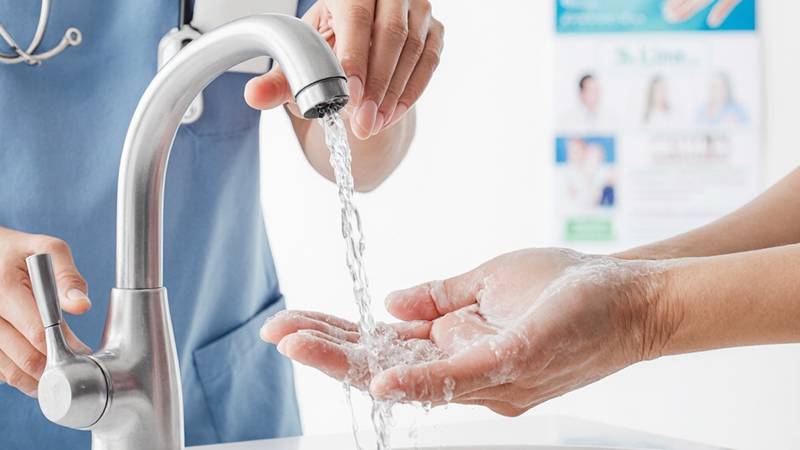Uncategorized
The Best Hand Hygiene Practices for Healthcare Workers
Introduction
In the world of healthcare, maintaining proper hand hygiene is one of the most important ways to prevent the spread of infections and protect both patients and medical staff. Every touch, every surface, and every patient interaction can potentially transmit harmful germs. That’s why hand hygiene is not just a routine — it’s a life-saving habit.
In this blog, we’ll explore the best hand hygiene practices for healthcare workers, why they matter, when to apply them, and how to make them a consistent part of daily care.
Why Hand Hygiene Matters in Healthcare
In healthcare settings, infections can spread quickly through contact with contaminated hands, instruments, or surfaces. A single lapse in hand hygiene can lead to healthcare-associated infections (HAIs), which affect millions of patients worldwide every year.
For doctors, nurses, and all other healthcare professionals, clean hands mean safer care. Proper hand hygiene reduces the risk of:
- Transmitting infectious diseases like the flu, COVID-19, or MRSA.
- Spreading germs between patients.
- Infecting oneself after contact with bodily fluids or contaminated surfaces.
- Increasing antibiotic resistance caused by cross-contamination.
Good hand hygiene saves lives, protects patients, and strengthens trust in healthcare systems.
When Should Healthcare Workers Clean Their Hands?
The World Health Organization (WHO) defines “Five Moments for Hand Hygiene” in healthcare settings. These are critical times when healthcare professionals should always clean their hands:
- Before touching a patient – To avoid transferring germs from surfaces or other people.
- Before clean or aseptic procedures – Such as inserting catheters or preparing injections.
- After exposure to bodily fluids – Including blood, urine, or wound cleaning.
- After touching a patient – To prevent spreading any microorganisms picked up.
- After touching patient surroundings – Even if the patient was not touched directly.
Following these five moments helps ensure consistent safety for both healthcare workers and patients.
Hand Washing vs. Hand Sanitizing in Healthcare
Both hand washing and hand sanitizing are essential in healthcare, but they are not interchangeable. The method used depends on the situation.
Hand Washing with Soap and Water
This is the most effective method when:
- Hands are visibly dirty or greasy.
- After contact with blood or bodily fluids.
- After using the bathroom.
- After caring for a patient with infectious diarrhea.
Steps for effective hand washing:
- Wet hands with clean running water.
- Apply soap and lather for at least 20 seconds.
- Scrub palms, backs of hands, between fingers, and under nails.
- Rinse thoroughly.
- Dry hands with a clean towel or air dryer.
Hand Sanitizing with Alcohol-Based Rubs
When hands are not visibly dirty, alcohol-based hand sanitizers are a quick and effective option in healthcare environments.

How to use sanitizer properly:
- Apply a coin-sized amount of sanitizer.
- Rub hands together, covering all surfaces.
- Continue rubbing until hands feel dry (around 20 seconds).
For maximum protection, sanitizers should contain at least 60% alcohol.
Tips for Maintaining Healthy Hands in Healthcare
Frequent hand cleaning can cause dryness, irritation, or cracked skin. However, healthcare workers can maintain skin health by following these tips:
- Use gentle, fragrance-free soap to reduce irritation.
- Apply hand cream or lotion regularly to prevent dryness.
- Avoid wearing rings or long nails, which can trap germs.
- Use lukewarm water instead of hot water when washing.
- Choose hand sanitizers with moisturizers to protect skin.
Healthy skin forms a better barrier against infection and helps healthcare workers stay comfortable throughout long shifts.
Common Mistakes to Avoid in Hand Hygiene
Even in healthcare environments, small mistakes can reduce the effectiveness of hand hygiene. Here are some common ones to watch out for:
- Not washing for long enough (less than 20 seconds).
- Skipping areas like thumbs, fingertips, and wrists.
- Wearing gloves without cleaning hands before and after.
- Using expired or low-alcohol hand sanitizers.
- Relying only on sanitizers when hands are visibly dirty.
Being aware of these errors helps ensure every hand hygiene moment counts.
Building a Culture of Hand Hygiene in Healthcare
Creating a strong hand hygiene culture within healthcare organizations requires teamwork and consistency. Hospitals and clinics can encourage this by:
- Providing easy access to hand hygiene stations near every patient area.
- Offering regular training sessions and visual reminders.
- Recognizing staff who consistently follow hygiene protocols.
- Using posters, signs, and digital reminders to reinforce good habits.
When every member of the healthcare team takes responsibility, the entire facility becomes safer and more trustworthy.
The Role of Leadership in Promoting Hand Hygiene
Leadership plays a key role in establishing high hygiene standards in healthcare settings. Supervisors and managers should lead by example, showing that hand hygiene is not optional but essential. They should:
- Monitor compliance regularly.
- Provide feedback and gentle reminders.
- Ensure sufficient supplies (soap, sanitizer, towels) are always available.
- Celebrate improvements in hygiene compliance rates.
A strong commitment from leadership inspires every healthcare worker to prioritize cleanliness and patient safety.
Conclusion
Hand hygiene is the foundation of infection control in healthcare. Whether it’s washing with soap and water or using alcohol-based sanitizer, every step matters. By following the WHO’s five moments, practicing proper techniques, and promoting a culture of cleanliness, healthcare workers can prevent infections, protect lives, and strengthen the quality of care.
In the end, clean hands don’t just save patients — they protect the entire healthcare community. It’s a simple habit, but one with powerful results.
You can easily find more of our blogs on Sanixway blog section!

